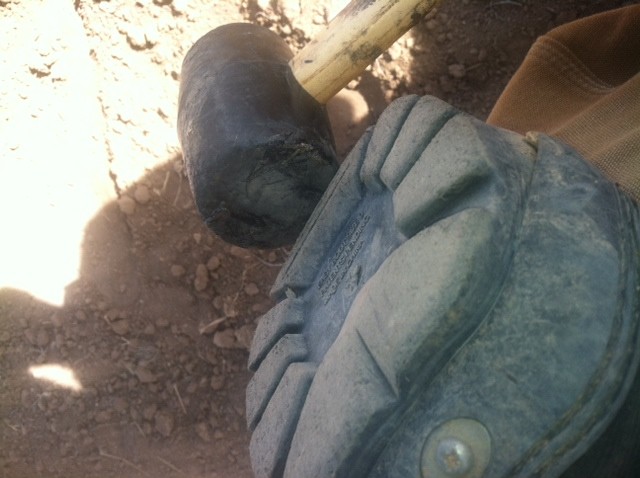I’ve had the good fortune to attend four endurance events since the end of November. It is always fascinating to meet people out in the field and to see what the current practices are – for better or for worse. Listed below are the four most common mistakes I’ve seen in the last two months.
Mistake # 1
One of the most consistent things I see at events and on the trail is people using the wrong size Easyboot Gloves on their horse. I often see Gloves that are one or even two sizes larger than the foot requires.

 A boot too big (left). A boot just right (right).
A boot too big (left). A boot just right (right).
The oversized boots obviously work for people – to a certain extent. But I think the addition of water, uphill or speed added to the equation would probably cause a boot loss. When I ask people about the sizing choice, they often say they go up a size to allow for changes throughout the growth cycle. My experience is that you do not need to allow for the growth cycle. It is important for the boots to be snug – very snug – not loose. A simple rasp of the toe area every week or two will keep the boot fitting nice and snugly. Any barefoot trimmer would be delighted for their customers to do a little hoof maintenance between visits because it would also help maintain a healthy hoof.
Mistake #2
People often make the mistake of thinking that adding a Power Strap will offset any size deficiencies. Or perhaps that it will offset any issues around flare, long toes or high heels. Whilst a Power Strap helps keep the top of the boot snug, it will not solve all fit issues. And if you are new to boots, the Power Strap will often mask what is going on inside the boot.

This boot fits well. Even with the Power Strap, you can see that the V is still spread.
Mistake #3
People are going up a size because they can’t easily apply the boot to the hoof, or they are not putting completely putting the boot on the hoof. When I ask if they use a mallet, some people cringe at the thought of banging a boot on. As a point of fact, the forces exerted when a horse trots or canters on hard ground are going to be significantly greater than the amount of force you can exert by a few bangs of a rubber mallet.

This Glove is not quite on yet. Note the gapping at the base of the V suggesting the toe is not fully inserted into the boot. Note also the gaiter appears to be too short.

A good few taps of the mallet at the toe cannot hurt your horse.
Mistake #4
People often tell me they have trouble getting tight-fitting boots off. The trick is to pull from the side/rear of the boot, rather than from the heel bulb area. Pulling from the rear of the boot actually causes the top of the boot shell to contract, hugging the hoof capsule even tighter, and making boot removal more challenging. Pull instead from one side or the other, and you will find it much easier to remove the boot.


Not like this (left). More like this (right).
Kevin Myers





